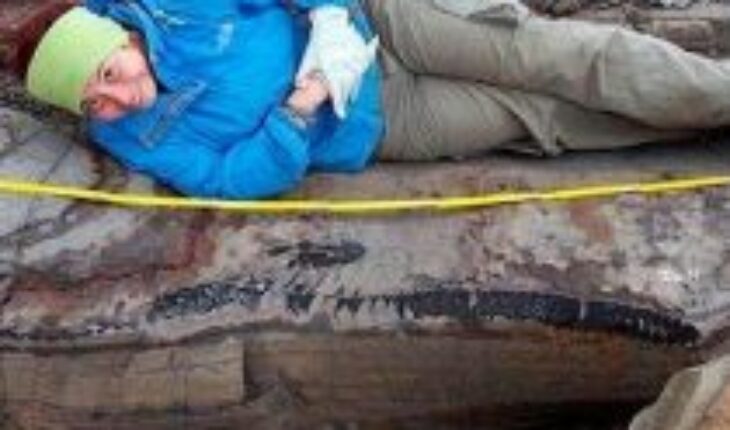The associate professor of the University of Magallanes and in charge of the macropaleontology section of the Institute of Patagonia, Judith Pardo, was presented this Friday at the Future Congress. Pardo referred to recent research on ichthyosaurs, which were found in southern Chile.
The scientist began by explaining that the University of Magallanes discovered the ichthyosaurs of the Cretaceous period. “They were marine reptiles that lived millions of years ago in Chile and elsewhere on the planet. They looked like dolphins or sharks, but they didn’t have much in common with them because they weren’t mammals or fish but reptiles,” he said.
He assured that “they evolved from terrestrial ancestors, modifying their legs into fins. They had lungs and nostrils through which they could breathe, so they had to surface from time to time. They adapted well to the marine environment so they should not leave their home for the coast.”
He explained regarding his reproduction that “when the calf was born, it did so from the tail to the head so as not to drown. They were viviparous because the embryo developed in a pouch inside its mother.”
“The ichthyosauria discovered in Chile, specifically near the Tindall glacier in an area of Torres del Paine, is the most complete. As the ice of this place has melted, the rocks in which the past life is found were exposed. In the place there are several ichtosaurs, several pregnant females, “he said.
The researcher highlighted her career investigating diseases that affected marine reptiles in the past through the study of paleopathologies. “It was the first time that a method was established for the recognition of bone diseases and traumas, which was related to the environment,” he explained.
He stressed that the Natural History Museum in Punta Arenas is exhibiting the ichthyosaur fossil Fiona, so called because in the excavation it had a green color due to the mosses. The above in order to bring people closer to science and to know this research.
Follow us on





